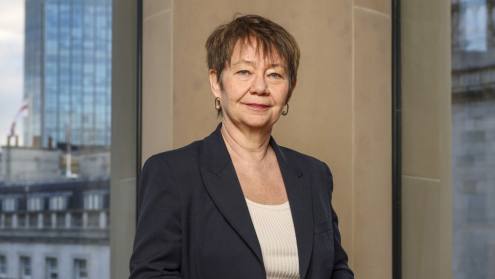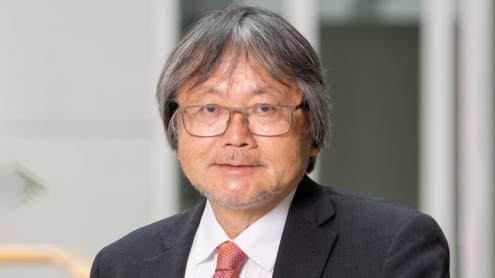Over the past year, emerging market policy-makers have fretted about the US unwinding its huge quantitative easing programme. Launched to stave off a depression, it brought down interest rates in the world’s biggest economy and led to a surge of capital to developing markets as yield-hungry investors sought to sustain their returns.
Editor's choice
The reversal of that trend will have major implications for emerging markets. The perils for them of the US Federal Reserve cutting its monthly bond purchases or raising rates too quickly were demonstrated in the first quarter of 2014 when countries such as Brazil, India and Turkey were hit by rapid outflows that hammered their currencies. Financial officials from those countries were quick to chide the Fed for not taking their plight into account with its decisions.
South Africa, with its fiscal and current account deficits, is one of the more vulnerable emerging markets, and suffered as badly as any of them from the volatility at the start of 2014.
For Gill Marcus, who as governor of the South African Reserve Bank (SARB) is charged with maintaining the country’s price stability, the new situation presents plenty of challenges. But, rather than looking to blame the US, she says that emerging markets simply have to accept that interest rates in the developed world are on the way up. Furthermore, even if this causes problems in the immediate term, it should be viewed positively because it signals the US’s economic recovery.
“Tapering is now a given,” she tells The Banker. “We’re going to have a period in which normalisation starts. It’s not for us to be satisfied or dissatisfied [with US monetary policy]. We had a global financial crisis that began in the middle of 2007. It’s been almost seven years. It’s imperative that we break the synchronised downturn. So, the US growing and normalising is good news in the medium to long term, even if in the short term [tapering] is going to be painful.”
Difficult hikes
The SARB reacted to the global crisis, which sent South Africa into recession, by reducing its base rate to 5%, its lowest level in 30 years. But this January it carried out its first raise since June 2008, and the first under Ms Marcus, who became central bank governor in mid-2009, when it hiked rates to 5.5%.
The decision was scarcely easy for the SARB’s monetary policy committee (MPC). It aims for inflation of between 3% and 6%, and its forecast figure for this year had recently increased from 5.7% to 6.3%. But it also has to take into account South Africa’s economic growth, which at barely above 2% is viewed as far too low for a country with such high levels of unemployment and poverty.
Ms Marcus says, however, that the move was necessary to counter inflationary pressures, which were rising partly due to the rand’s weakness in the previous few months. “We don’t target the level of the currency, but we try to look at what its implications are for inflation down the line,” says the former anti-apartheid activist. “And the rand had moved quite significantly at that time. We were concerned. Our forecasts were indicating that we would be above the target [inflation] range probably for five quarters. We’ve been out of the target band before, but it’s been a fairly narrow breach and not for a long period. Part of the challenge we have is anchoring inflation expectations. If we didn’t act, we felt that those expectations would dislodge somewhat.”
The MPC met again on May 22, after The Banker went to press. Most analysts predicted it would resist tightening again, mainly because severe mining strikes since the start of the year have further dampened economic prospects.
Nonetheless, Ms Marcus says South Africa has entered a rising interest rate cycle. “But it won’t necessarily happen at every meeting or by the same amount,” she adds. “We operate a flexible inflation targeting policy. We look at what’s in the best interests of the economy as a whole. Given our concerns about the economy and growth, we’ve been more tolerant of inflation at a higher level than we would normally have been. We’re trying to deal with this very difficult dilemma of slowing growth and rising inflation.”
Structural woes
The SARB expects inflation to peak at 6.6% towards the end of 2014, before falling to 5.8% next year. Whether this proves correct will depend on several factors outside Ms Marcus’s control, including the movement of the rand in response to changing US monetary conditions. Another will be the progress of the economy, which recently lost its crown as Africa’s largest to Nigeria, but remains by far the most sophisticated on the continent.
The central bank is generally viewed as having helped as much as it can. A recovery now depends on the government rectifying structural weaknesses, say analysts.
While SARB officials regularly express unease about the South African economy, they are confident that a big public infrastructure investment programme that is under way will soon start to make a difference. “The reality is that a lot of South Africa’s issues in terms of growth are resolvable,” says Ms Marcus. “One of the main inhibitors has been the electricity supply. There’s no question that it curtails growth because there’s a lot that you just can’t do. It’s a structural issue that should be resolved with new energy coming onstream, theoretically at the end of this year or early next year.”
As well as managing the inflationary environment, the central bank has taken on a greater regulatory role. South Africa’s banking sector, widely regarded as one of the soundest and best-regulated in the world, came through the global crisis unscathed. But policy-makers, having studied what went wrong elsewhere, placed prudential regulation under the control of the SARB for the first time at the start of this year.
In addition, they will create a market conduct authority that will monitor issues such as financial inclusion and have greater power over banks than the existing consumer watchdog. It will ostensibly be an independent body, although it will report to the treasury. “We are confident about the banking system,” says Ms Marcus. “But there’s no room for complacency. We wanted to learn lessons from countries that had crises instead of just sitting back and saying: ‘We’re fine’.”
Basel headaches
Among the SARB’s most pressing regulatory concerns in the past few years has been the rise of unsecured personal lending. Although it makes up only about 10% of total lending in South Africa, many economists have sounded warnings about household indebtedness. The shares of African Bank Investments, a lender specialising in unsecured loans, have dropped significantly since 2012.
Ms Marcus says that while unsecured lending has deepened financial inclusion by bringing into the banking system many people who cannot not afford collateralised loans such as mortgages, the SARB is pleased the market has cooled in the past two years. “Unsecured lending was growing very fast and in an unsustainable way, at about 30%, in 2011 and 2012,” she says. “Therefore, we spoke to the banks concerned. All of them took measures. And there has been a marked slowdown.”
She cautions, however, that South African regulators have to strike a balance. If they clamp down too heavily on unsecured bank debt, people will probably turn instead to the loan sharks that can be found on streets throughout the country. “If consumers need financing, they’ll go outside the banking system and use unregulated [entities],” she says.
In the longer term, the SARB has to deal with new international regulations, especially those emanating from Basel III. South African banks already meet the capital adequacy and leverage ratio requirements, while the liquidity coverage ratio, which is meant to ensure they can survive a short funding squeeze, was resolved when the central bank established a credit line that can be tapped in emergencies. But the net stable funding ratio (NSFR), designed to make banks match the tenor of their assets and liabilities more closely, is a concern.
In the case of South African banks, which mostly rely on institutional deposits for funding, meeting it would entail them issuing more long-term capital, which is difficult given the small size of the local corporate bond market.
Ms Marcus bluntly states that South African banks cannot meet the NSFR – which is not due to be implemented until towards the end of this decade – in its current form, and hints that she would not even want them to. “The outstanding matter is the NSFR,” she says. “I don’t think anybody, even in advanced economies, is able to meet the NSFR. A lot more discussion is needed about its intention and whether it’s doable.
“To meet the requirement, we would have to alter the way the whole South African system functions. We’re not sure that’s appropriate. Obviously Basel doesn’t want to operate by exceptions and we fully understand that. But it’s something we take very seriously given the implications for our system.”












